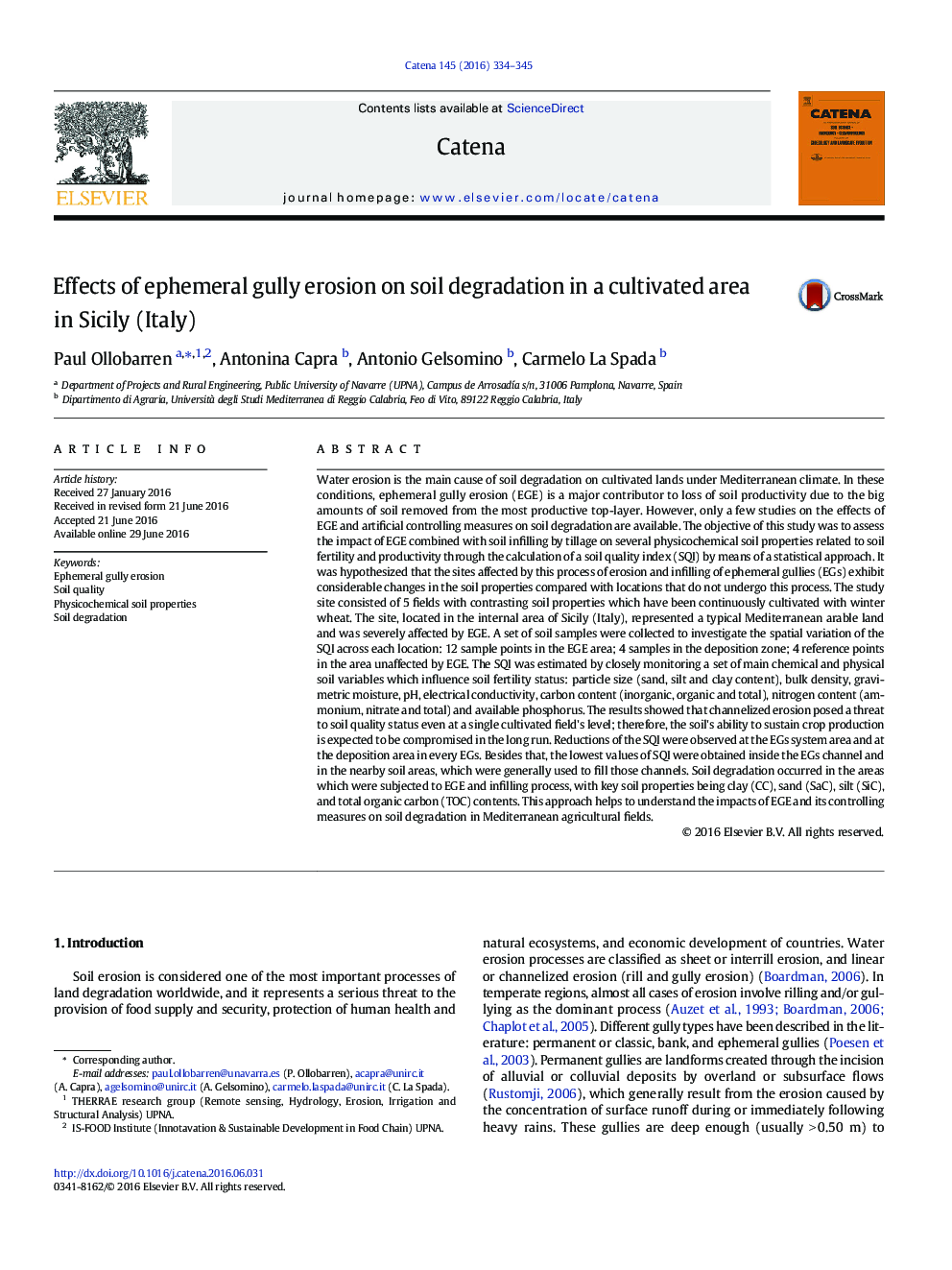| کد مقاله | کد نشریه | سال انتشار | مقاله انگلیسی | نسخه تمام متن |
|---|---|---|---|---|
| 4570908 | 1629207 | 2016 | 12 صفحه PDF | دانلود رایگان |
• Evaluation of soil degradation by ephemeral gully erosion and its elimination on 5 agricultural soils.
• 16 physicochemical soil properties were selected to conform a soil quality index.
• Parameters clay, sand, silt and total organic carbon contents were the key indicators for building soil quality index.
• Lowest values of soil quality index were detected on closest areas affected by the ephemeral gully erosion and its infilling.
Water erosion is the main cause of soil degradation on cultivated lands under Mediterranean climate. In these conditions, ephemeral gully erosion (EGE) is a major contributor to loss of soil productivity due to the big amounts of soil removed from the most productive top-layer. However, only a few studies on the effects of EGE and artificial controlling measures on soil degradation are available. The objective of this study was to assess the impact of EGE combined with soil infilling by tillage on several physicochemical soil properties related to soil fertility and productivity through the calculation of a soil quality index (SQI) by means of a statistical approach. It was hypothesized that the sites affected by this process of erosion and infilling of ephemeral gullies (EGs) exhibit considerable changes in the soil properties compared with locations that do not undergo this process. The study site consisted of 5 fields with contrasting soil properties which have been continuously cultivated with winter wheat. The site, located in the internal area of Sicily (Italy), represented a typical Mediterranean arable land and was severely affected by EGE. A set of soil samples were collected to investigate the spatial variation of the SQI across each location: 12 sample points in the EGE area; 4 samples in the deposition zone; 4 reference points in the area unaffected by EGE. The SQI was estimated by closely monitoring a set of main chemical and physical soil variables which influence soil fertility status: particle size (sand, silt and clay content), bulk density, gravimetric moisture, pH, electrical conductivity, carbon content (inorganic, organic and total), nitrogen content (ammonium, nitrate and total) and available phosphorus. The results showed that channelized erosion posed a threat to soil quality status even at a single cultivated field's level; therefore, the soil's ability to sustain crop production is expected to be compromised in the long run. Reductions of the SQI were observed at the EGs system area and at the deposition area in every EGs. Besides that, the lowest values of SQI were obtained inside the EGs channel and in the nearby soil areas, which were generally used to fill those channels. Soil degradation occurred in the areas which were subjected to EGE and infilling process, with key soil properties being clay (CC), sand (SaC), silt (SiC), and total organic carbon (TOC) contents. This approach helps to understand the impacts of EGE and its controlling measures on soil degradation in Mediterranean agricultural fields.
Journal: CATENA - Volume 145, October 2016, Pages 334–345
